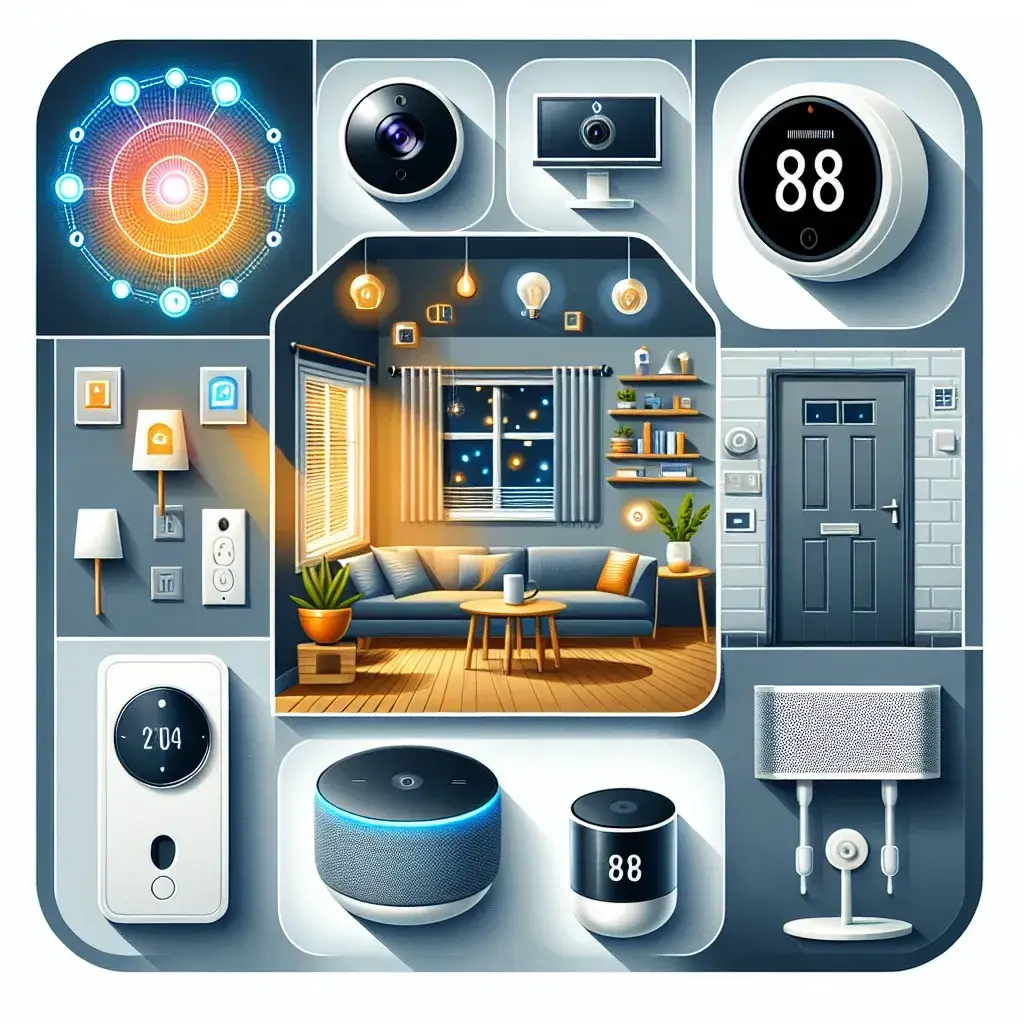In an age where technology seamlessly integrates into daily living, smart home devices stand out as harbingers of both convenience and security. From controlling lights with a voice command to monitoring your home from halfway across the world, these devices are revolutionizing how we interact with our living spaces. Here’s a detailed exploration of how smart home technology can make your life easier while keeping your household secure.
Understanding Smart Home Devices
Smart home devices are interconnected gadgets that can be remotely controlled, often via a smartphone or a voice assistant. These devices use Internet of Things (IoT) technology to communicate with each other and perform various functions, making our homes more efficient and user-friendly. Popular categories include smart lights, thermostats, locks, cameras, and more.
Convenience Offered by Smart Home Devices
The convenience of smart home devices cannot be overstated. Here are a few ways these gadgets simplify our lives:
- Automation: Imagine waking up to a fresh pot of coffee that brewed itself because your coffee maker was scheduled to start brewing 10 minutes before your alarm went off. Smart home devices can automate several mundane tasks, freeing up your time for more important activities.
- Remote Control: Whether you forgot to turn off the lights or need to adjust the thermostat, remote control access via smartphone apps allows you to manage your home from anywhere in the world. This feature is especially useful for frequent travelers or busy professionals.
- Voice Commands: Voice assistants like Amazon’s Alexa, Google Assistant, and Apple’s Siri make controlling smart devices even more convenient. Simply speak your command, and your wish is their command—whether it’s adjusting the lighting, locking doors, or playing your favorite playlist.
- Smart Scheduling: Create schedules for various smart devices to perform specific functions at set times. For instance, smart lights can turn on at sunset and turn off at sunrise, saving energy and enhancing security.
Enhanced Security Features
While convenience is a significant advantage, the security features of smart home devices are equally compelling. Here’s how these devices contribute to a safer home:
- Smart Locks: Traditional locks can be vulnerable, but smart locks offer enhanced security features such as remote locking/unlocking, timed access codes, and real-time alerts whenever the door is accessed.
- Surveillance Cameras: High-definition smart cameras offer 24/7 surveillance of your property. With motion detection, cloud storage, and real-time alerts, you can keep an eye on your home from wherever you are.
- Video Doorbells: These devices allow you to see and speak to whoever is at your door without having to open it. They often come with motion detectors and recording capabilities, which can be crucial for identifying suspicious activity.
- Alarm Systems: Smart alarm systems offer customizable settings and can be linked to various sensors like glass-break detectors or smoke detectors. This interconnected network provides comprehensive security for different scenarios.
Integration and Compatibility
For the best experience, ensure that all your smart home devices are compatible with each other. Brands like Google Nest, Amazon Alexa, and Apple HomeKit offer robust ecosystems that facilitate easy integration of various smart devices.
Cross-Platform Operation
One of the standout features of smart home devices is their ability to work across various platforms. For instance, you can control Philips Hue lights using both Google Assistant and Apple HomeKit, offering flexibility based on your requirements.
Potential Challenges and How to Overcome Them
While smart home devices offer numerous benefits, they are not without challenges. Here’s how to tackle some common issues:
- Initial Costs: High-quality smart home devices can be pricey. Start with essential devices and gradually expand your smart home system as your budget allows.
- Privacy Concerns: Data privacy is crucial when using interconnected devices. Opt for products from reputable brands with solid security protocols and regularly update your software to fix any vulnerabilities.
- Technical Compatibility: Choosing devices that are not compatible with each other can lead to a fragmented system. Stick to one ecosystem (such as Google, Amazon, or Apple) to ensure seamless integration.
- Internet Dependency: A stable internet connection is essential for the proper functioning of most smart home devices. Consider investing in a reliable internet service provider and having backup options like mobile hotspots.
Future Trends in Smart Home Technology
The smart home industry is continuously evolving. Here are some future trends to watch out for:
- AI and Machine Learning: Future smart homes will be equipped with devices that learn your habits and preferences over time, offering even more tailored conveniences.
- Enhanced IoT Integration: Continued advancements in IoT technology will make it easier for more devices to communicate seamlessly, creating an even more interconnected home environment.
- Sustainability: Eco-friendly smart devices that focus on energy efficiency will become more popular, helping to reduce environmental impact while saving on utility bills.
- Advanced Security Features: With the increasing focus on security, expect future devices to offer even more sophisticated features like biometric verification, advanced encryption, and AI-powered threat detection.
Conclusion
Smart home devices offer a blend of convenience and security, transforming how we live and interact with our homes. As this technology continues to evolve, the benefits will only increase, making it a worthwhile investment for anyone looking to enhance their living environment.

